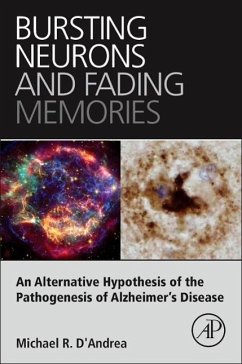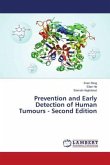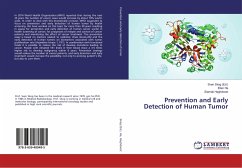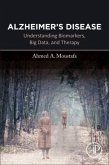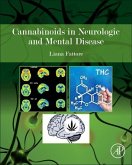Advances in Alzheimer's disease (AD) research have been challenging and without major breakthroughs in understanding its pathological basis. The reigning hypothesis suggests AD is the result of extracellular amyloid deposition that seed to form amyloid plaques, which then grow and kill neighboring neurons. However, there are several inconsistencies with this hypothesis, not to mention the inability to show clinical benefit in several failed clinical trials by pharmaceuticals (i.e., from Pfizer, Eli Lilly, etc.), and it is in the field's best interest to explore and test multiple hypotheses for pathology rather than drive the majority of research on this single amyloid theory. Reviewing many scientifically peer-reviewed publications, this book describes the "Inside-Out" hypothesis on how amyloid escapes the circulatory system through a dysfunctional blood-brain barrier to bind to the alpha 7 nicotinic acetylcholine receptor on pyramidal neurons. Over time, excessive amounts ofamyloid appear to be internalized, resulting in neuron death and lysis. This simple mechanism readily explains plaque composition, size, shape, and location. Based on the current direction of research in the field, this hypothesis appears years from any research and development.
"In addition to presenting and supporting his specific hypothesis, the author succeeds in conveying a number of important points regarding scientific research in general and the IHC methods specifically.... The methodical approach described here, including the careful attention to possible sources of artifacts, is a realistic portrayal of the hard work required both in the laboratory and at the microscope." -- Dr. Rhein Parri, Senior Lecturer in Pharmacology, School of Life and Health Sciences, Aston University, Birmingham, UK, in Biotechnic and Histochemistry
"....This book will delight the scientifically savvy reader with a guided tour of the process.... Dr. D'Andrea chronicles the process of scientific discovery in an insightful way that takes the reader on a journey... If you wanted a window into Alzheimer's brain, here it is..... As a neuroscientist in the field, I found this book to be incredibly informative to the way I think about Alzheimer's pathogenesis." - Holly Brothers, Postdoctoral Fellow, The Ohio State University, Columbus, OH, USA on Amazon
"Bursting Neurons and Fading Memories by Dr. Michael D'Andrea is a good book to read for those interested in Alzheimer's disease (AD), its past research failures and its future promises.... The book provides valuable and specific staining techniques, some of which Dr. D'Andrea has devised through trial and error, that remind me of Ram?n y Cajal's early trials with improving silver nitrate stains at the turn of the 20th century, to gather details about the neuron's structure and to discover some novel facts about how it dies in the damaged nervous system. I highly recommend this book." - Jack de la Torre, MD, PhD, Professor of Neuropsychiatry (Adjunct), Department of Psychology, University of Texas at Austin, Austin, TX, USA
"....Anyone wishing a clear description of the essential findings and the resulting hypothesis without having to consult the primary research papers will find their wish fully granted here. The writing is clear, the editing careful, and the references sufficient to show the way to the most relevant literature...." - Keith A. Crutcher, PhD, Neuroscientist, in the Journal of Alzheimer's Disease
"....This book will delight the scientifically savvy reader with a guided tour of the process.... Dr. D'Andrea chronicles the process of scientific discovery in an insightful way that takes the reader on a journey... If you wanted a window into Alzheimer's brain, here it is..... As a neuroscientist in the field, I found this book to be incredibly informative to the way I think about Alzheimer's pathogenesis." - Holly Brothers, Postdoctoral Fellow, The Ohio State University, Columbus, OH, USA on Amazon
"Bursting Neurons and Fading Memories by Dr. Michael D'Andrea is a good book to read for those interested in Alzheimer's disease (AD), its past research failures and its future promises.... The book provides valuable and specific staining techniques, some of which Dr. D'Andrea has devised through trial and error, that remind me of Ram?n y Cajal's early trials with improving silver nitrate stains at the turn of the 20th century, to gather details about the neuron's structure and to discover some novel facts about how it dies in the damaged nervous system. I highly recommend this book." - Jack de la Torre, MD, PhD, Professor of Neuropsychiatry (Adjunct), Department of Psychology, University of Texas at Austin, Austin, TX, USA
"....Anyone wishing a clear description of the essential findings and the resulting hypothesis without having to consult the primary research papers will find their wish fully granted here. The writing is clear, the editing careful, and the references sufficient to show the way to the most relevant literature...." - Keith A. Crutcher, PhD, Neuroscientist, in the Journal of Alzheimer's Disease

